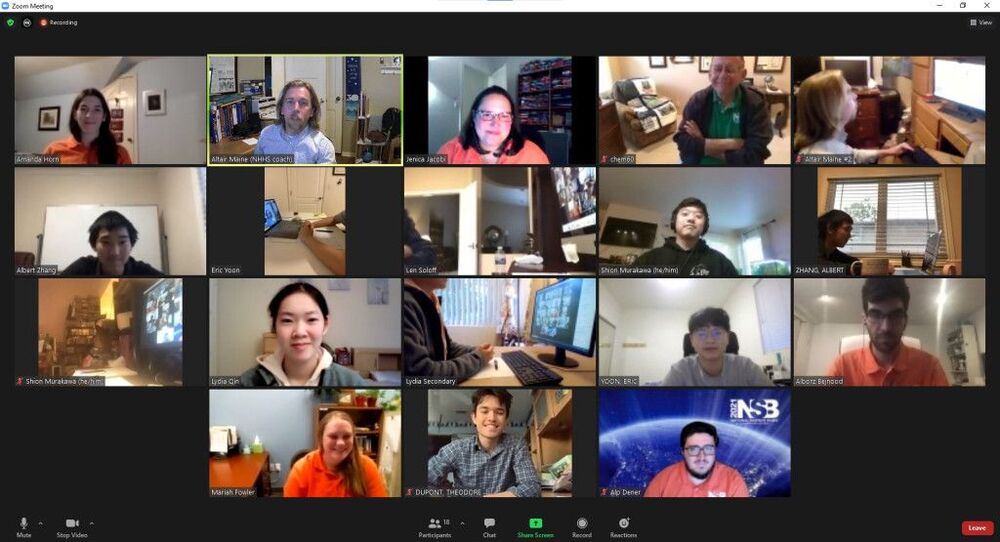The Science of Aliens, Part III: Have they overcome their savage past or might they want to eat us?
Reviewing our own species’ behavior suggests a cautious approach to contact with extraterrestrials.
The Science of Aliens, Part III: Have they overcome their savage past or might they want to eat us?
Reviewing our own species’ behavior suggests a cautious approach to contact with extraterrestrials.

Both arts and sciences advance through open-minded iterations. The alternative of staying within traditional boundaries suppresses the exploration of new territories. As Oscar Wilde said: “Consistency is the last refuge of the unimaginative.”
Recognizing the crucial role that imagination plays in advancing both arts and sciences would translate to a culture that fosters innovation by rewarding creativity. Conventional groupthink could be circumvented by populating selection committees of funding agencies with creative individuals rather than with traditional thinkers. A culture of innovation would also benefit from overlap spaces where scientists and artists interact. In deriving his theory of gravity Albert Einstein was inspired by the philosopher Ernst Mach, and Einstein’s new notions of space and time inspired Picasso’s paintings.
Creativity in arts and sciences establishes a backdrop for human existence, as the content it invents gives pleasure and meaning to our lives. The human act of creation is an infinite-sum game, from which all of us benefit. And we can all participate in the creative process, as long as we follow Wilde’s advice: “Be yourself; everyone else is already taken.”

For that, they will need the quantum equivalent of optical repeaters, the components of today’s telecommunications networks that keep light signals strong across thousands of kilometers of optical fiber. Several teams have already demonstrated key elements of quantum repeaters and say they’re well on their way to building extended networks. “We’ve solved all the scientific problems,” says Mikhail Lukin, a physicist at Harvard University. “I’m extremely optimistic that on the scale of 5 to 10 years… we’ll have continental-scale network prototypes.”
Advance could precisely link telescopes, yield hypersecure banking and elections, and make quantum computing possible from anywhere.

JÜLICH, Germany, May 28, 2021 — Quantum systems are considered extremely fragile. Even the smallest interactions with the environment can result in the loss of sensitive quantum effects. In the renowned journal Science, however, researchers from TU Delft, RWTH Aachen University and Forschungszentrum Jülich now present an experiment in which a quantum system consisting of two coupled atoms behaves surprisingly stable under electron bombardment. The experiment provide an indication that special quantum states might be realised in a quantum computer more easily than previously thought.
 The so-called decoherence is one of the greatest enemies of the quantum physicist. Experts understand by this the decay of quantum states. This inevitably occurs when the system interacts with its environment. In the macroscopic world, this exchange is unavoidable, which is why quantum effects rarely occur in daily life. The quantum systems used in research, such as individual atoms, electrons or photons, are better shielded, but are fundamentally similarly sensitive.
The so-called decoherence is one of the greatest enemies of the quantum physicist. Experts understand by this the decay of quantum states. This inevitably occurs when the system interacts with its environment. In the macroscopic world, this exchange is unavoidable, which is why quantum effects rarely occur in daily life. The quantum systems used in research, such as individual atoms, electrons or photons, are better shielded, but are fundamentally similarly sensitive.
“Systems subject to quantum physics, unlike classical objects, are not sharply defined in all their properties. Instead, they can occupy several states at once. This is called superposition,” Markus Ternes explains. “A famous example is Schrödinger’s thought experiment with the cat, which is temporarily dead and alive at the same time. However, the superposition breaks down as soon as the system is disturbed or measured. What is left then is only a single state, which is the measured value,” says the quantum physicist from Forschungszentrum Jülich and RWTH Aachen University.


The recent announcement that scientists have made human-monkey embryos and cultured them in the lab for two weeks made international headlines.
The technology to make animals that contain cells from other species has been available for decades and used extensively in research. These organisms are called “chimeras”.
But this latest advance highlights the need to broaden the discussion around the possible benefits of such research and, specifically, how inter-species chimeric research should be conducted in future.

A team of North Hollywood High School science students emerged victorious Saturday over scholars from 63 other schools nationwide in this year’s U.S. Department of Energy Office of Science National Science Bowl Championship.
The win marks North Hollywood High’s second National Science Bowl championship, following the title captured in 2001.
The school has placed among the top five teams 12 times at the national event.
It occurred naturally, and scientists know this for certain.
Pediatrician, Medical Innovator, Educator — Dr. Jamie Wells, MD, FAAP — Director, Research Science Institute (RSI), Center for Excellence in Education, Massachusetts Institute of Technology (MIT) — Professor, Drexel University School of Biomedical Engineering, Science and Health Systems.
Dr. Jamie L. Wells, MD, FAAP, is an Adjunct Professor at Drexel University’s School of Biomedical Engineering, Science and Health Systems, where she has been involved in helping to spearhead the nation’s first-degree program focused on pediatric engineering, innovation, and medical advancement.
Dr. Wells is an award-winning Board-certified pediatrician with many years of experience caring for patients. With her BA with Honors from Yale, and her MD from Jefferson Medical College, Philadelphia, PA, she has served as a Clinical Instructor/Attending at NYU Langone, Mt. Sinai-Beth Israel and St. Vincent’s Medical Centers in Manhattan.
Dr. Wells also serves as Director of the Research Science Institute (RSI), at Center for Excellence in Education (CEE), a non-profit, 501©(3) organization, collaboratively sponsored with MIT bring together top U.S. and international high school students for an intensive, six-week summer program that provides students with the opportunity to conduct original, cutting-edge research.
Dr. Wells is on the leadership council of the Wistar Institute (the USA’s first independent biomedical research facility and certified cancer center), Ambassador of the Healthcare Global Blockchain Business Council, was a grant reviewer for the Susan G. Komen Community Grants Program, judged both the local, district and world robotics championships for Dean Kamen’s F.I.R.S.T. (For Inspiration & Recognition of Science & Technology) nonprofit, as well as the Miss America’s Outstanding Teen scholarship competition (for which she is now a member of its Board of Directors), and is the Chair of the Yale Alumni Health Network (YAHN).

NASA’s newest Mars rover is beginning to study the floor of an ancient crater that once held a lake.
NASA’s Perseverance rover has been busy serving as a communications base station for the Ingenuity Mars Helicopter and documenting the rotorcraft’s historic flights. But the rover has also been busy focusing its science instruments on rocks that lay on the floor of Jezero Crater.
What insights they turn up will help scientists create a timeline of when an ancient lake formed there, when it dried, and when sediment began piling up in the delta that formed in the crater long ago. Understanding this timeline should help date rock samples – to be collected later in the mission – that might preserve a record of ancient microbes.